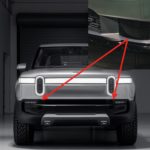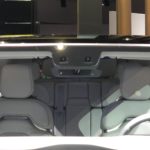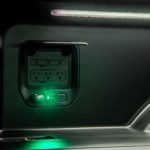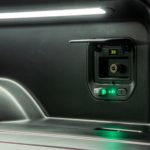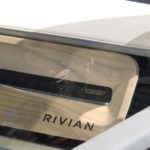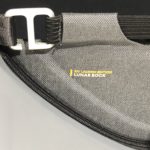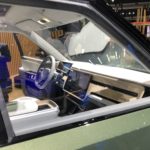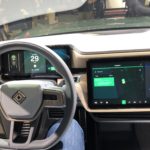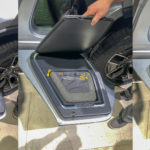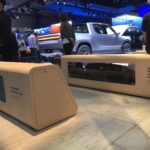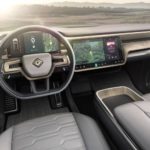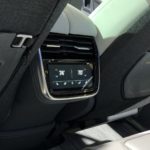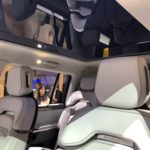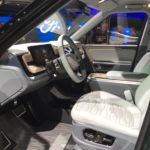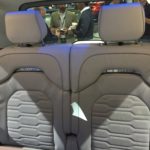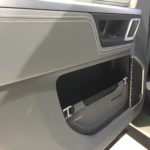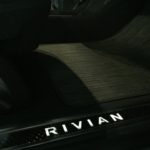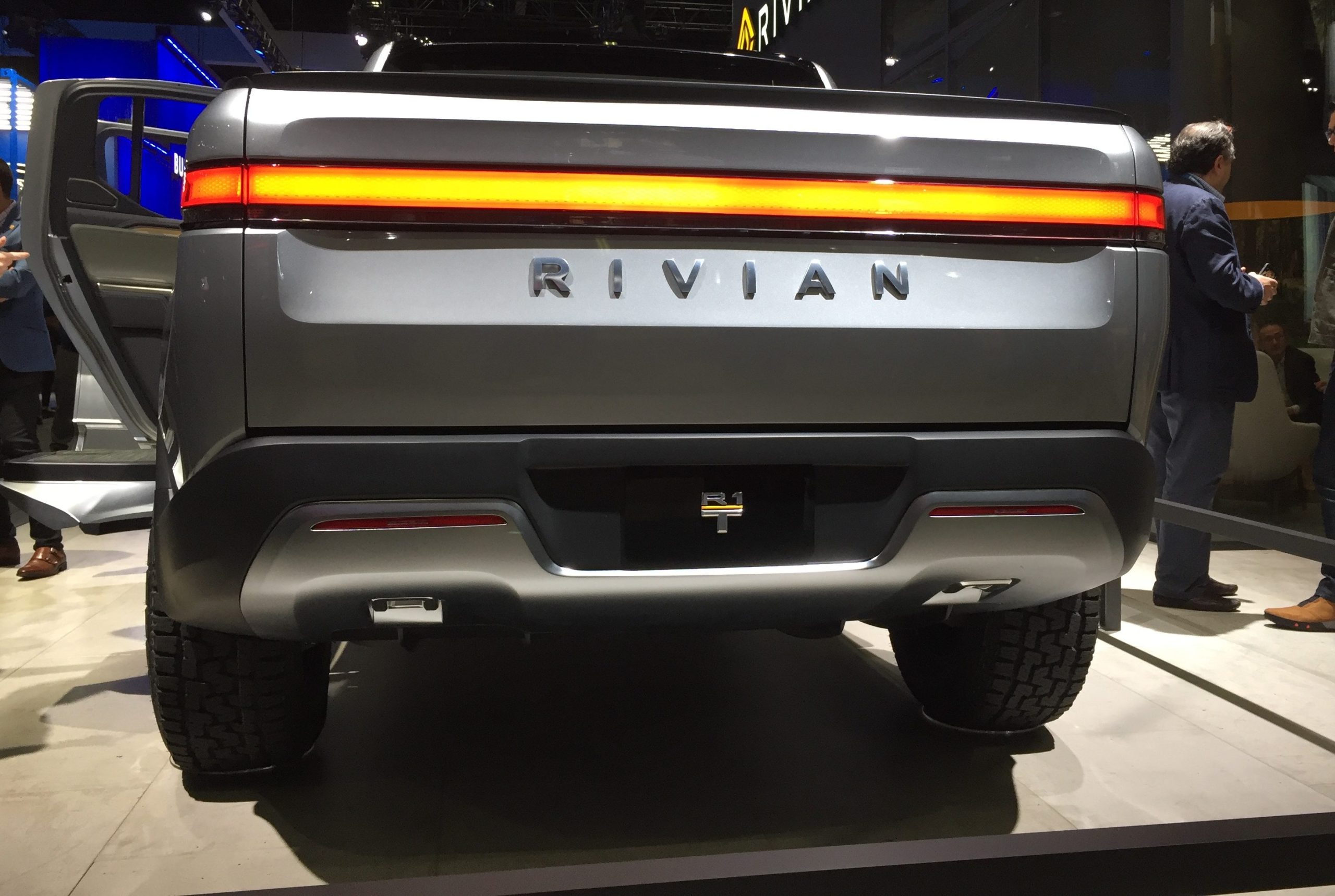
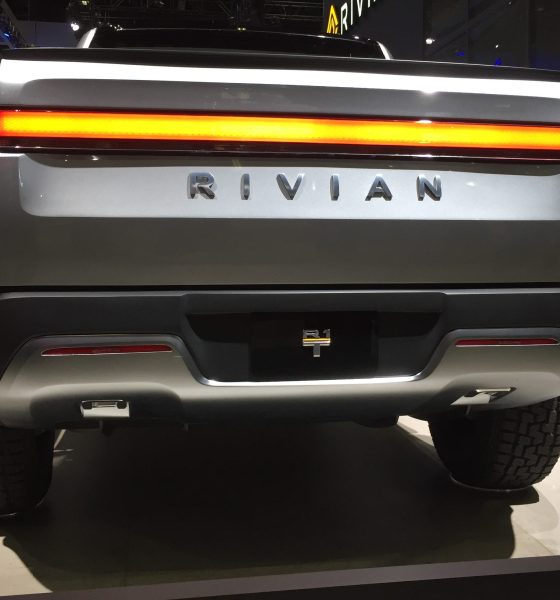
News
Rivian R1T and R1S: Top 10 hidden features that make an electric off-road vehicle
Rivian came out of the shadows this week with a bang, unveiling two impressive all-electric luxury adventure vehicles — the R1T pickup truck and the R1S SUV. While both vehicles are armed to the teeth with cutting-edge tech, the R1T and the R1S are true-blooded off-road machines that are as capable off the beaten path as they are on paved highways.
The R1T and the R1S share the same platform, and both vehicles carry the brand’s no-compromises approach to utility and storage. Inasmuch as details of the two electric vehicles have caught the eye of the auto community, though, it should be noted that Rivian’s pickup truck and SUV have a number of compelling, almost “hidden” features that are yet to be discussed. Here are ten of the most notable.
1. Dual LiDAR and front-facing cameras for semi-autonomous driving
Rivian notes that both the R1T and the R1S will eventually be capable of Level 3 Self-Driving on highways. To accomplish this, the company has equipped the R1T and the R1S with a suite of cameras, radar, ultrasonic sensors, high-precision GPS technologies, and LiDAR. Images taken by Teslarati reveal that two of the cameras are found behind the vehicles’ rearview mirror, while their two LiDAR units are situated below the pickup truck and the SUV’s “Stadium” headlights.
- (Photos: Rivian, Christian Prenzler)
- (Photo: Christian Prenzler)
2. USB-C Ports, 110v outlets, and air compressors
At the back of the Rivian R1T pickup truck bed lies a set of 3 USB-C and 3 110V outlets, which would be an invaluable feature for owners who love to camp outdoors (the feature pretty much makes the R1T into a giant power bank). The built-in air compressor will also be useful for owners who are transporting bikes and inflatables during trips.
- (Photo: Rivian)
- (Photo: Rivian)
3. R1T liftgate and truck bed tricks
Both the R1T’s liftgate and truck bed are electric-powered, which gives the vehicle some nifty tricks. With the touch of a button, owners could open the pickup’s liftgate in either a 90-degree or 180-degree angle, the former being incredibly useful for transporting long cargo and the latter being a perfect way to access items on the truck bed easily. The R1T is also capable of automatically deploying or retracting its bed covering, which protects cargo from dirt and rain, to name a few.
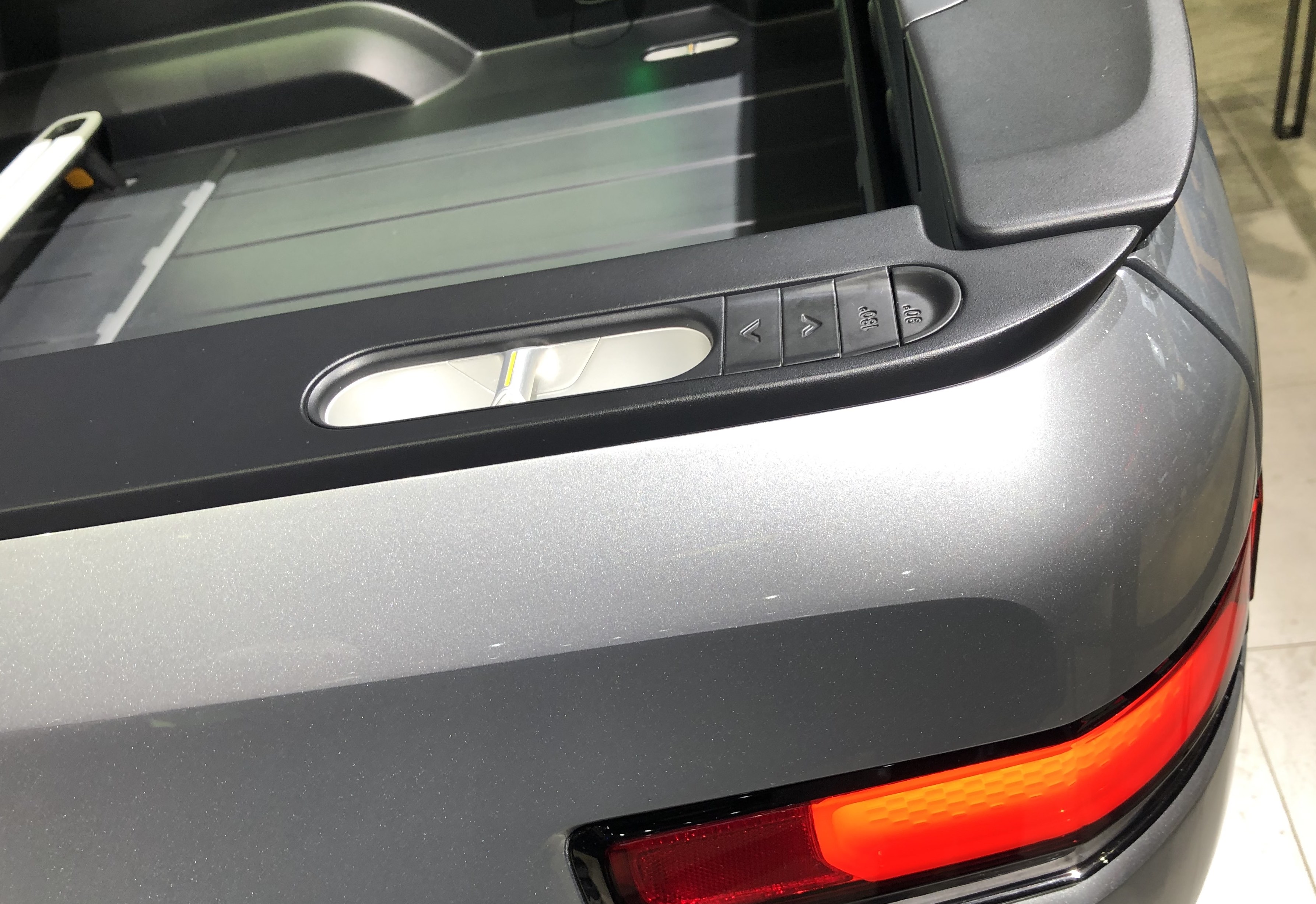

4. Removable Carbon Fiber Aero Wheel inserts
Rivian’s R1T pickup truck debuted with a set of wheels that featured what appeared to be carbon fiber Aero inserts. Such design elements maximize range and improve battery efficiency, as observed by Tesla Model 3 owners who tested their electric sedan’s consumption with and without Aero covers in place. Considering that Rivian’s vehicles are built for tough environments, optimizations such as Aero inserts could go a long way in ensuring that the vehicles get as much range as they can.
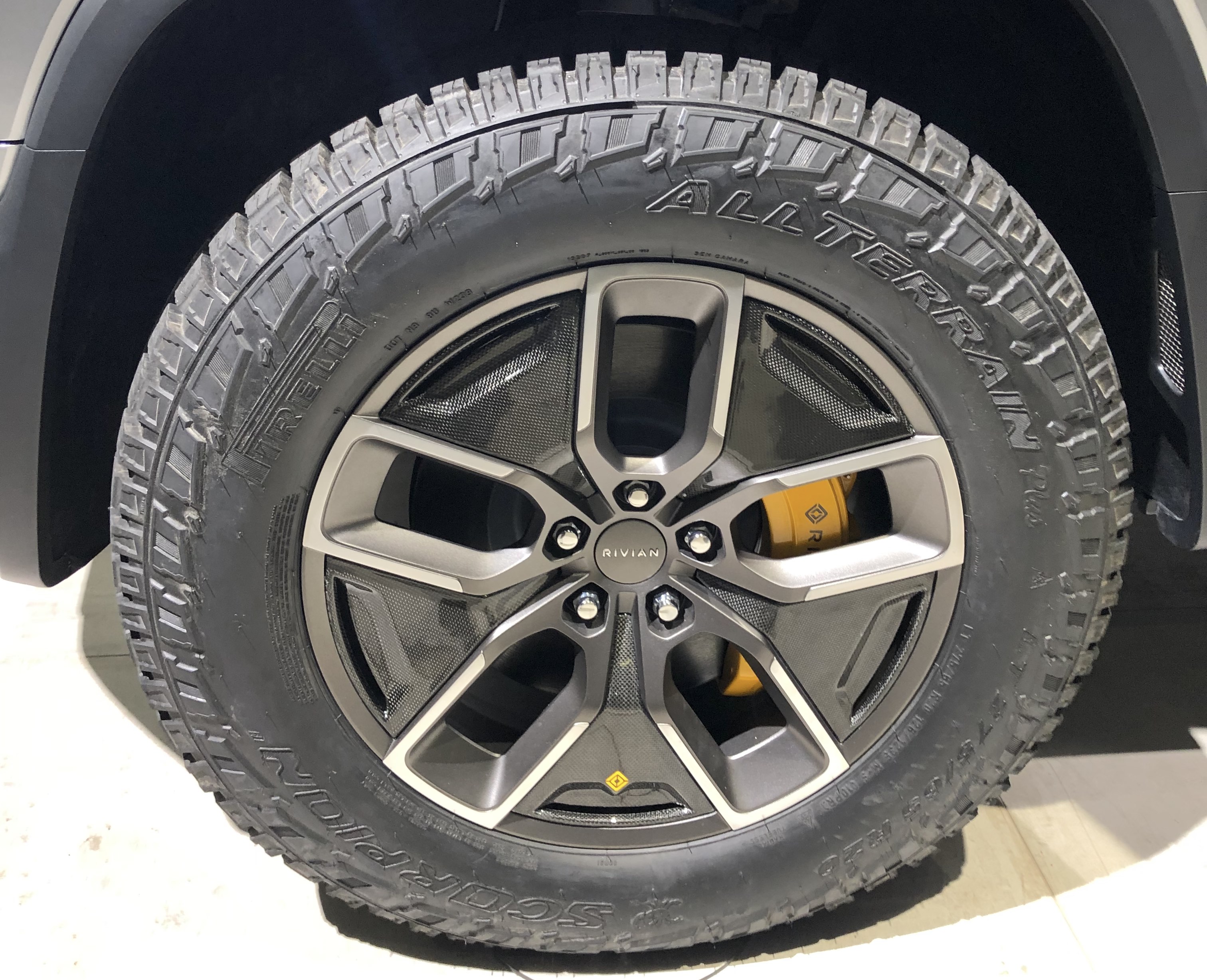
5. Rivian’s “Launch Edition Lunar Rock” variant
While Rivian is yet to announce if it would release a special trim for its first production vehicles, similar to Tesla’s “Founders Series” and Audi’s “Edition One” for the e-tron SUV, photos of the R1S that we captured show a distinct branding — “Riv Launch Edition Lunar Rock.” As such, early reservation holders of Rivian’s luxury electric vehicles would likely find themselves in a special edition vehicle.
- Details of the Rivian R1T and the Rivian R1S. [Credit: Chistian Prenzler/Teslarati]
- Details of the Rivian R1T and the Rivian R1S. [Credit: Chistian Prenzler/Teslarati]
6. Ventless HVAC
Both the Rivian R1T and the R1S feature vents with automated controls, with the pickup truck and SUV’s air conditioning being managed by the vehicles’ fully-automated “Ambient AC” system. If the EV community’s warm reception to the Model 3’s air vents is any indication, there is a good chance that customers would be fond of the R1T and R1S’ “Ambient AC” system as well.
- Details of the Rivian R1T and the Rivian R1S. [Credit: Chistian Prenzler/Teslarati]
7. “Gear Tunnel” compartments
A key feature of the Rivian R1T is its “Gear Tunnel,” a storage space that runs the entire width of the pickup truck and is optimized to store long items such as fishing rods and golf clubs. That’s not all, though, as even the Gear Tunnel’s covers have hidden storage in them, which could fit a small bag. Considering the potential of the storage space, perhaps Rivian could even introduce a sliding rail for the Gear Tunnel in the future, which would make retrieving items easier.
- (Photo: Christian Prenzler)
- Details of the Rivian R1T and the Rivian R1S. [Credit: Chistian Prenzler/Teslarati]
8. Infotainment systems front and back
Both the Rivian R1T and the R1S are loaded to the teeth with tech. This is evident in the robust touchscreen interfaces on the vehicle, from the large center console in front to a smaller 6.8-inch touchscreen at the back, where passengers can set their preferences for features such as climate control.
- The Rivian R1S dashboard. [Credit: Rivian]
- (Photo: Christian Prenzler)
9. A cool, hidden flashlight
Being an adventure vehicle, the R1T and the R1S are fitted with a novel and very practical feature — a flashlight embedded on the vehicle’s front doors. Simple? Yes. Useful for the outdoors? Most certainly.
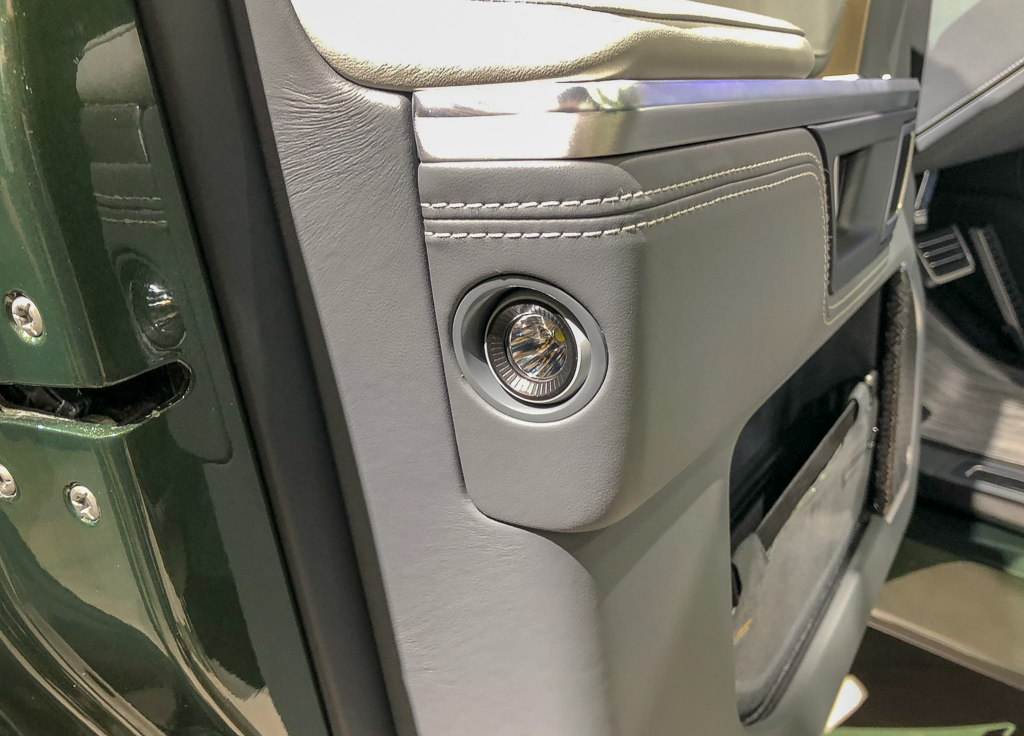
10. Eco-friendly flourishes
Rivian has made it a point to equip its vehicles with materials that are premium and eco-friendly at the same time. The floor mats, for example, are made from a thin, lightweight materials that almost feels like carbon fiber. The vehicles’ seats are covered in vegan-friendly materials as well. The company’s attention to detail is also notable, as evidenced by the subtle flourishes of the Rivian branding in areas such as the dashboard.
- Details of the Rivian R1T and the Rivian R1S. [Credit: Chistian Prenzler/Teslarati]
- Details of the Rivian R1T and the Rivian R1S. [Credit: Chistian Prenzler/Teslarati]
- Details of the Rivian R1T and the Rivian R1S. [Credit: Chistian Prenzler/Teslarati]
- Details of the Rivian R1T and the Rivian R1S. [Credit: Chistian Prenzler/Teslarati]
- Details of the Rivian R1T and the Rivian R1S. [Credit: Chistian Prenzler/Teslarati]
Reservations for the R1T pickup truck and the R1S SUV are now open. Interested customers can place a refundable $1,000 deposit for each of the vehicles here. Rivian expects to begin production of the R1T in 2020, followed by the R1S in 2021.

News
Tesla (TSLA) receives “Buy” rating and $551 PT from Canaccord Genuity
He also maintained a “Buy” rating for TSLA stock over the company’s improving long-term outlook, which is driven by autonomy and robotics.

Canaccord Genuity analyst George Gianarikas raised his Tesla (NASDAQ:TSLA) price target from $482 to $551. He also maintained a “Buy” rating for TSLA stock over the company’s improving long-term outlook, which is driven by autonomy and robotics.
The analyst’s updated note
Gianarikas lowered his 4Q25 delivery estimates but pointed to several positive factors in the Tesla story. He noted that EV adoption in emerging markets is gaining pace, and progress in FSD and the Robotaxi rollout in 2026 represent major upside drivers. Further progress in the Optimus program next year could also add more momentum for the electric vehicle maker.
“Overall, yes, 4Q25 delivery expectations are being revised lower. However, the reset in the US EV market is laying the groundwork for a more durable and attractive long-term demand environment.
“At the same time, EV penetration in emerging markets is accelerating, reinforcing Tesla’s potential multi‑year growth runway beyond the US. Global progress in FSD and the anticipated rollout of a larger robotaxi fleet in 2026 are increasingly important components of the Tesla equity story and could provide sentiment tailwinds,” the analyst wrote.
Tesla’s busy 2026
The upcoming year would be a busy one for Tesla, considering the company’s plans and targets. The autonomous two-seat Cybercab has been confirmed to start production sometime in Q2 2026, as per Elon Musk during the 2025 Annual Shareholder Meeting.
Apart from this, Tesla is also expected to unveil the next-generation Roadster on April 1, 2026. Tesla is also expected to start high-volume production of the Tesla Semi in Nevada next year.
Apart from vehicle launches, Tesla has expressed its intentions to significantly ramp the rollout of FSD to several regions worldwide, such as Europe. Plans are also underway to launch more Robotaxi networks in several more key areas across the United States.
News
Waymo sues Santa Monica over order to halt overnight charging sessions
In its complaint, Waymo argued that its self-driving cars’ operations do not constitute a public nuisance, and compliance with the city’s order would cause the company irreparable harm.

Waymo has filed a lawsuit against the City of Santa Monica in Los Angeles County Superior Court, seeking to block an order that requires the company to cease overnight charging at two facilities.
In its complaint, Waymo argued that its self-driving cars’ operations do not constitute a public nuisance, and compliance with the city’s order would cause the company irreparable harm.
Nuisance claims
As noted in a report from the Los Angeles Times, Waymo’s two charging sites at Euclid Street and Broadway have operated for about a year, supporting the company’s growing fleet with round-the-clock activity. Unfortunately, this has also resulted in residents in the area reportedly being unable to sleep due to incessant beeping from self-driving taxis that are moving in and out of the charging stations around the clock.
Frustrated residents have protested against the Waymos by blocking the vehicles’ paths, placing cones, and “stacking” cars to create backups. This has also resulted in multiple calls to the police.
Last month, the city issued an order to Waymo and its charging partner, Voltera, to cease overnight operations at the charging locations, stating that the self-driving vehicles’ activities at night were a public nuisance. A December 15 meeting yielded no agreement on mitigations like software rerouting. Waymo proposed changes, but the city reportedly insisted that nothing would satisfy the irate residents.
“We are disappointed that the City has chosen an adversarial path over a collaborative one. The City’s position has been to insist that no actions taken or proposed by Waymo would satisfy the complaining neighbors and therefore must be deemed insufficient,” a Waymo spokesperson stated.
Waymo pushes back
In its legal complaint, Waymo stated that its “activities at the Broadway Facilities do not constitute a public nuisance.” The company also noted that it “faces imminent and irreparable harm to its operations, employees, and customers” from the city’s order. The suit also stated that the city was fully aware that the Voltera charging sites would be operating around the clock to support Waymo’s self-driving taxis.
The company highlighted over one million trips in Santa Monica since launch, with more than 50,000 rides starting or ending there in November alone. Waymo also criticized the city for adopting a contentious strategy against businesses.
“The City of Santa Monica’s recent actions are inconsistent with its stated goal of attracting investment. At a time when the City faces a serious fiscal crisis, officials are choosing to obstruct properly permitted investment rather than fostering a ‘ready for business’ environment,” Waymo stated.
News
Tesla FSD v14.2.2 is getting rave reviews from drivers
So far, early testers have reported buttery-smooth drives with confident performance, even at night or on twisty roads.

Tesla Full Self-Driving (Supervised) v14.2.2 is receiving positive reviews from owners, with several drivers praising the build’s lack of hesitation during lane changes and its smoother decision-making, among others.
The update, which started rolling out on Monday, also adds features like dynamic arrival pin adjustment. So far, early testers have reported buttery-smooth drives with confident performance, even at night or on twisty roads.
Owners highlight major improvements
Longtime Tesla owner and FSD user @BLKMDL3 shared a detailed 10-hour impression of FSD v14.2.2, noting that the system exhibited “zero lane change hesitation” and “extremely refined” lane choices. He praised Mad Max mode’s performance, stellar parking in locations including ticket dispensers, and impressive canyon runs even in dark conditions.
Fellow FSD user Dan Burkland reported an hour of FSD v14.2.2’s nighttime driving with “zero hesitations” and “buttery smooth” confidence reminiscent of Robotaxi rides in areas such as Austin, Texas. Veteran FSD user Whole Mars Catalog also demonstrated voice navigation via Grok, while Tesla owner Devin Olsen completed a nearly two-hour drive with FSD v14.2.2 in heavy traffic and rain with strong performance.
Closer to unsupervised
FSD has been receiving rave reviews, even from Tesla’s competitors. Xpeng CEO He Xiaopeng, for one, offered fresh praise for FSD v14.2 after visiting Silicon Valley. Following extended test drives of Tesla vehicles running the latest FSD software, He stated that the system has made major strides, reinforcing his view that Tesla’s approach to autonomy is indeed the proper path towards autonomy.
According to He, Tesla’s FSD has evolved from a smooth Level 2 advanced driver assistance system into what he described as a “near-Level 4” experience in terms of capabilities. While acknowledging that areas of improvement are still present, the Xpeng CEO stated that FSD’s current iteration significantly surpasses last year’s capabilities. He also reiterated his belief that Tesla’s strategy of using the same autonomous software and hardware architecture across private vehicles and robotaxis is the right long-term approach, as it would allow users to bypass intermediate autonomy stages and move closer to Level 4 functionality.
